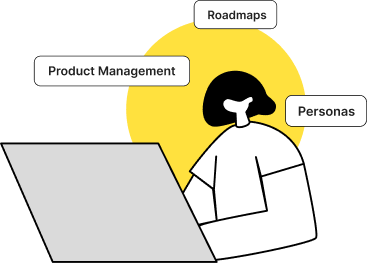When you wake up early in the morning and realize that you have a ton of work to do, how do you feel? Not great, right? We all are familiar with this situation all too well, especially in the product management space.
You have a long list of unprioritized features and chores in front of you. The Sales team assures you that Feature A will be amazing and will propel the product to the next level. But a big customer has suggested Feature B be added to the product immediately or else they will cancel. But then your Data Analyst is convinced that another feature is unneeded and that market expectation is for Feature C.
The truth of product development is that you can never complete everything—priorities alter, resources are reassigned, and finances tend to be tight. It is our responsibility as product managers to strictly prioritize the most critical tasks, such as features before we run out of resources. But how do we do that?

What is Prioritization?
| The word refers to the process of establishing an order according to which you need to perform certain tasks, which are arranged as per their importance. |
Advanced prioritizing approaches are used in complex projects across several companies. These are often frameworks known for certain standards or norms that aid in the decision-making process. Prioritization success typically affects the success of the firm. Getting bogged down with pending and unfinished work is a sure way to fail. As a result, organizations pay close attention to the techniques of priority they use.
Let’s take a look at the various product prioritizing approaches:
| Context | Types |
| External and Qualitative Techniques | MoSCoW Technique Prune the Tree technique Story Mapping Speed Boat Technique |
| External and Quantitative Techniques | Kano Model Buy a Feature QFD Opportunity Scoring |
| Internal and Quantitative Techniques | Financial Analysis Ian McAllister framework Business Goal Value Vs Risk Value Vs Cost Scorecard Technique Theme Screening |
| Internal and Qualitative Techniques | Classification Ranking Systemico Model Feature Buckets Technique KJ Method Stacked Ranking |
In my last article, I had the chance to experiment with roadmapping by using 10 potential features for the Spotify app. The experiment provided me a glimpse into the realm of product management and high-stakes decision-making processes supported by research, market, and consumer data. In this article, we will use the MoSCoW prioritization framework to set in order those 10 hypothetical features.
Before we jump into the prioritization workflow, let us understand what MoSCoW Prioritization Template is.
What is MoSCoW Prioritization?
MoSCoW prioritization is a mechanism used to build a priority hierarchy along the product journey. It is based on the agile product management technique, which tries to identify aspects such as product cost, quality, and needs as early as feasible. When a feature is marked as “must-have” in MoSCoW, everyone in the team understands that it cannot be disregarded throughout the product’s development.
Prioritization based on MoSCoW should be employed early in the product management cycle, but it should not be your initial move. Before you can start categorizing requirements by priority, you must first define the product feature or problem needs. As a result, the sooner your team can establish these priorities, the better.
The MoSCoW prioritizing process is separated into four stages:

Must Haves –
These are high-priority needs that will provide the groundwork for the main pipeline. Avoiding these implies putting a halt to the whole product or future activity. In general, product ideation is fully dependent on identifying must-haves.
Should Haves –
This sort of criterion is secondary in importance. Should-haves have no effect on the launch and are typically regarded as relevant but not critical. As a result, the failure of a should-have job is unlikely to result in the project’s failure. If you’re creating a product, even if these prerequisites aren’t satisfied, it will still be functional.
Could Haves –
This criteria is less critical than the previous two, yet it is nonetheless desired. When we compare could-haves to should-haves, the former has a lesser degree of negative consequence, if neglected. Traditionally, if a product is not significantly time-constrained, the third-level priority needs in the Agile framework MoSCoW are achieved. We may refer to them as low-cost modifications in product development.
Won’t Haves –
A need that will not be included in the current release but may be included at a later stage of development is referred to as a “Won’t Have”. In most cases, such restrictions have little bearing on the product’s success.
Let’s begin the prioritization process, one step at a time.
Step 1 – Addressing the Features and Issues
For this article, let’s lay down those 10 hypothetical features and issues of Spotify here and begin the prioritization process.
| 1. Current user count is 380M+ a. Add 1B users to the platform b. Expand to different geographical markets c. Increase the free user to paid user Conversions up by 15% |
| 2. The best option for audio quality today is 320 kbps. Other apps like Amazon Music HD are offering over 1440 kbps. |
| 3. Create personalized playlists using machine learning for each user + improve the recommendation algorithm (i.e., people listening to Spotify-recommended songs and not skipping them within 5 seconds) |
| 4. Improve caching in Spotify iOS app to deliver music better |
| 5. Search shows songs, artists, and podcasts. The performance is way below the expected SLA of 0.5 sec. |
| 6. Spotify for automobiles. Compatibility and driving adoption for Android Auto + Apple Carplay. |
| 7. Expand Spotify Podcasts outside the United States and boost the listener base. |
| 8. Build and open-source Backstage, Tech docs platform for Developers. |
| 9. Partner with WordPress to convert podcasts into transcripts. |
| 10. Create Spotify Lite app for low-connectivity zones |
Step 2 – Product Vision and Research
Spotify, as we all know, has always been a customer-focused app. The company’s strategy is founded on its goal of ensuring that its services result in a win-win outcome for both fans and artists. Their success may be ascribed in great part to their unwavering efforts in the following:
- Music for users is being updated.
- An algorithm that continually learns and adjusts to the music preferences of the user.
- Collaboration with artists to provide them with everything they need for financial success.
Working towards that vision and purpose, their primary aim is to focus on the metrics listed below:
| 1. The total number of signups and their locations |
| 2. The rate of conversion from free to paying users |
| 3. The length of time consumers spend using the app |
| 4. The number of songs played and their duration |
| 5. Playlists are created by artists and users |
You’re probably wondering why they focus just on those five factors. Before beginning the prioritizing process, we need to have statistical numbers to back up our views in order to avoid any issues throughout the decision-making process among stakeholders.
With all of the data at our fingertips, prioritizing will be a breeze. So let’s get started on the MoSCoW Prioritization procedure.
Step 3 – The MoSCoW Prioritization Process –
1- If you are using Freshflows, you can dive into the Templates section and pick a MoSCoW prioritization template.

2- Prioritize the features and issues in the template based on the four categories of the MoSCoW.

Are you still wondering why?
Well, to address your question, let’s take a look at some of the statistics to see what’s driving the prioritizing.
| 1. The number of podcast listeners on Spotify in the United States is expected to climb to 43.6 million by 2025. |
| 2. Spotify ranked first, with 24 percent of weekly podcast listeners in 2021. |
| 3. 48 Million episodes in April 2021. |
| 4. In India, popularity has increased thrice. |
| 5. 4 Billion Playlists curated depending upon different factors such as mood, age and theme. 1400% Increase in Work from home themed playlist in 2020. |
| 6. Every day, people listen to Spotify for 148 minutes. |
| 7. In 2021, the number of monthly active users is expected to be about 381 million. |
| 8. In 2021, there will be 172 million premium subscribers. |
Conclusion –

The skill of prioritization demonstrates the efficiency of your process. The strategy may assist you in gaining company-wide support for your work or, at the very least, explaining to stakeholders why you made the choices you did. Communicating your team’s prioritizing process also assists you in setting expectations throughout the organization. Stakeholders in other departments will recognize that your team has thought through and considered all the choices you’ve made when they see your technique for selecting one venture over another.
I am hopeful that this Spotify exercise will help guide you through your MoSCoW prioritization process.


